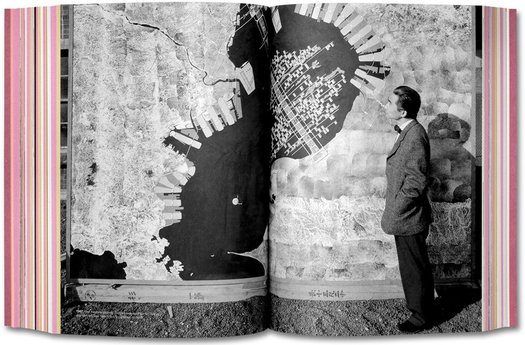
Kenzo Tange inspects his proposed design for Tokyo Bay, 1960
Floating cities. Capsule towers. Buildings that mutate. A reimagination of the physical landscape. Such were the promises of the Metabolists, the Japanese avant-gardists who emerged as a phenomenon in 1960 and reached their apogee a decade later as cultural heroes. They are back again today, and in all their modular glory, in Project Japan: Metabolism Talks, the latest doorstop from Rem Koolhaas. It is an extraordinary book, and I feel somewhat churlish to say it is not absolutely perfect.
In his now familiar method, Koolhaas takes an enormous amount of material and martials it in a coordinated way. There are interviews, contemporary and historical essays, new photographs, vintage photographs, plans, drawings, graphs, tables, timelines, etc., ad nauseum. The competing visions of history are presented and allowed to speak for themselves, with Koolhaas as a kind of interested referee/narator. The backbone of it all is a series of interviews conducted with the primary participants in the movement, conducted by Koolhaas and Hans Ulrich Olbrist. Together, they allow Koolhaas to construct a social and political history that supplements his formal analysis.
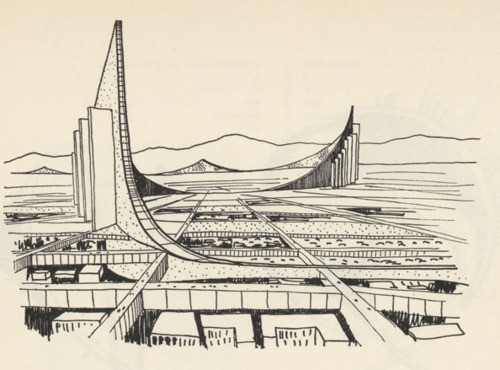
Kisho Kurokawa, Wall City, 1959
Metabolism grew out of the expansionist dreams of imperial Japan, and around the orbit of Kenzo Tange, who was the gray eminence but not a formal member of the group. (Although, there really was no formal membership.) With their own cities overpopulated, Japanese architects looked to a tabula rasa on which they could build, and found the invaded territory of Manchuria. Those dreams were hardly spoken of in the postwar years, when Japan itself became a tabula rasa. The title, Project Japan, is borrowed from this period, when the country reinvented itself as an economic powerhouse.
Faced with the immense task of constructing a new society over the destroyed old one, the Metabolist group developed a shared language of capsulized megastructures on artificial land (floating on water, in the air, or lifted above ground), that could grow organically. The most radical of the group were Kiyonori Kikutake and Kisho Kurokowa, the most grounded Kenji Ekuan and Fumihiko Maki. Arata Isozaki, was a fellow traveler, though like Tange always separate.
Koolhaas is especially adept in mapping how the Metabolists maniplated the media and penetrated the Japanese political bureaucracy to achieve their ends. (A process with which he is expert himself.) The group included a critic/theorist/journalist in Noboru Kawazoe, a government building official in Atsushi Shimokobe. Kurokawa invented himself as something of a mod celebrity figure, and later failed in an attempt at a political career.
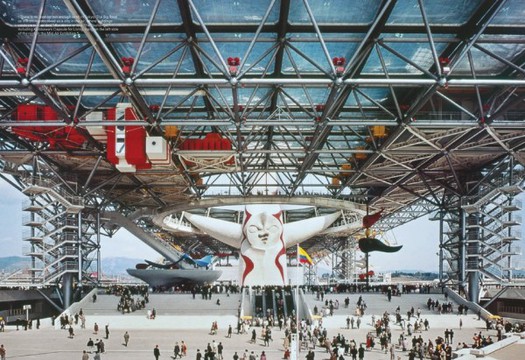
Kenzo Tange, Big Roof, Expo '70
The movement had its great moment in 1970, at Osaka's Expo '70. Its centerpiece was Tange's Big Roof, a titanic spaceframe punctured by a symbolic sculpture—The Tower of the Sun. The frame itself supported parasitic capsule structures by Maki and Kurokawa, and there were numerous other spectacular Metabolist pavilions.
With the collapse of the global economy in the 1970s, the Metabolists dream of reforming Japan dissipated, though not completely. Adept at working with power, and offering a politically neutral alternative to Western architects, they found their tabula rasas elsewhere, primarily in the desert autocracies of the Middle East and in newly independent African nations. Tange proves especially nimble, with major symbolic projects in Saudi Arabia, Iran, Nigeria, Singapore, and elsewhere. In Syria, he designed a megalomaniacal mountain residence—the "People's Palace"—for Hafez al-Assad, now home to his embattled son Bashir. Was this amoral opportunism or an altruistic mission to spread modernity to the developing world? Koolhaas, in no position to moralize, spells out the facts.
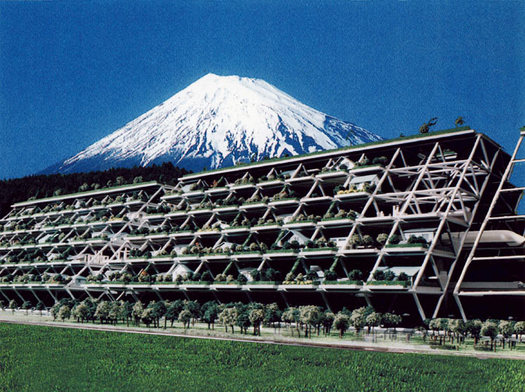
Kayinori Kikutaki, Stratiform Structure Module, 1972. An inspiration for BIG?
Experimental, optimistic, opportunistic—it is not hard to see what it was about this movement that captured the attention of Koolhaas. Like Tange, he has attracted a generation of younger architects who are pushing architectural culture forward, as he stands somewhat apart, a guru father. (Olbrist being the Kawazoe to his Tange.) Certainly, one suspects there are several well-thumbed Metabolist monographs in the office of Bjarke Ingels.
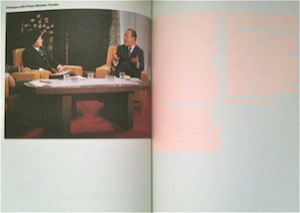
Spread from Project Japan, design by Irma Boom
But about the book itself. As sometimes happens with Koolhaas's buildings, the ideas seem to have gotten slightly out front of the physical construction. The design, by Irma Boom, is at turns exemplary and frustrating. With so many images, captions, graphs, and charts, it is a miracle of obsessive organization and clarity. But the decision to print so many of its texts in dense flourescent orange type seems to me indefensible. This material is basically illegible. Did no one look at the proofs? One might also quibble with the raw, unlaminated paperback cover of this heavy brick of a book, which frays and dings before one even gets it out of its shrink-wrap. Flaps would have at least helped. Metabolism couldn't last forever, but this reverent memorial to it should.
